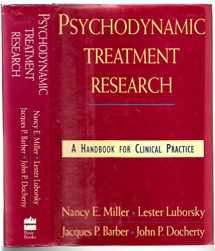
Psychodynamic Treatment Research: A Handbook For Clinical Practice
Book details
Summary
Description
As we enter a new era of scientific evaluation and acceptance of Freud's ideas, psychodynamic practitioners need to be aware of the most valid and clinically useful findings relevant to their everyday work with patients. This handbook meets that need by integrating the best contributions of the clinical psychoanalytic literature with the latest generation of clinical-quantitative research, and translating these findings into pragmatic clinical wisdom about what works and what doesn't.
In twenty-six chapters, forty-nine leading authorities and clinician-researchers discuss what is known about selecting patients, defining treatments, and measuring key processes and outcomes. The findings include which curative factors are effective; how the patient-therapist alliance can be a major predictor of treatment success; new transference, defense, insight, and internalization measures; prescriptions for improved case studies; pros and cons of the DSMs; and the role of psychotherapy manuals.
This comprehensive volume not only offers the clinician the latest in psychodynamic research and thinking but can guide those who wish to shape their clinical hypothesis into a study. By reviewing the central clinical concepts and techniques of psychodynamic psychotherapy and by providing the necessary empirical documentation to support their validity and clinical relevance, Psychodynamic Treatment Research makes an important contribution to mapping out the future of therapy.


We would LOVE it if you could help us and other readers by reviewing the book
Book review



